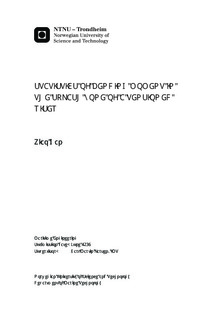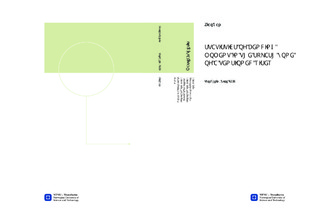| dc.contributor.advisor | Larsen, Carl Martin | nb_NO |
| dc.contributor.author | Gan, Xiao | nb_NO |
| dc.date.accessioned | 2014-12-19T12:13:01Z | |
| dc.date.available | 2014-12-19T12:13:01Z | |
| dc.date.created | 2014-09-18 | nb_NO |
| dc.date.issued | 2014 | nb_NO |
| dc.identifier | 748308 | nb_NO |
| dc.identifier | ntnudaim:11651 | nb_NO |
| dc.identifier.uri | http://hdl.handle.net/11250/239179 | |
| dc.description.abstract | The main idea of SLTS method is to find a design storm that the extreme responses of a structure in its design lifetime can be obtained from this seastate, instead of performing full long-term time-domain dynamic analysis. The design storm is found in an approximate long-term response analysis, establish by the results from frequency domain analysis. However, the computer simulation program SIMA does not include a frequency domain solver, the frequency domain simulation is replaced by time domain simulation. Short time simulation of each selected seastate is performed in time domain in order to find the zero up-crossing period and variance, which can be used to establish approximate short-term distribution for each seastate. The distributions are described by Rayleigh distribution. From approximate short-term distributions, an approximate long-term distribution can be established, thus the approximate response amplitude and seastate with largest short-term probability can be identified. This is design storm. The estimation of maximum bending moment can thus perform only in a short-term simulation, since the design storm is expected to cause the maximum bending moment in lifetime. | nb_NO |
| dc.language | eng | nb_NO |
| dc.publisher | Institutt for marin teknikk | nb_NO |
| dc.title | STATISTICS OF BENDING MOMENT IN THE SPLASH ZONE OF A TENSIONED RISER | nb_NO |
| dc.type | Master thesis | nb_NO |
| dc.source.pagenumber | 88 | nb_NO |
| dc.contributor.department | Norges teknisk-naturvitenskapelige universitet, Fakultet for ingeniørvitenskap og teknologi, Institutt for marin teknikk | nb_NO |

